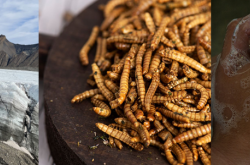The Good, the Bad and the Toxic
This article was originally written and submitted as part of a Canada 150 Project, the Innovation Storybook, to crowdsource stories of Canadian innovation with partners across Canada. The content has since been migrated to Ingenium’s Channel, a digital hub featuring curated content related to science, technology and innovation.
In 1987, National Research Council of Canada (NRC) scientists worked around the clock to find out why three Canadians had died and hundreds became sick after eating mussels. The villain, a rare toxin produced by algae, was traced to a single area of Prince Edward Island. Ever since, NRC has helped Canadian food inspectors ensure that popular seafood is safe to eat. Now, NRC is developing advanced tools to provide early warnings of toxic algae before shellfish become contaminated.
In 2002, NRC’s chemical analysis wizards documented the first case of “paralytic shellfish poisoning” in North America – caused by the consumption of pufferfish caught off the Florida coast. More recently, NRC joined an international research program to monitor and forecast shellfish toxins along the Gulf of Maine and the Bay of Fundy.
NRC researchers are also looking at ways to prevent shellfish toxins from entering the food chain and found a gene in clams that may determine toxin levels. The NRC discovery could help scientists breed shellfish that are safer to eat – a benefit to both consumers and the shellfish industry.
















